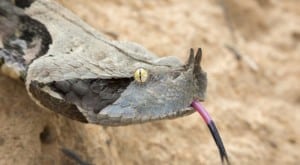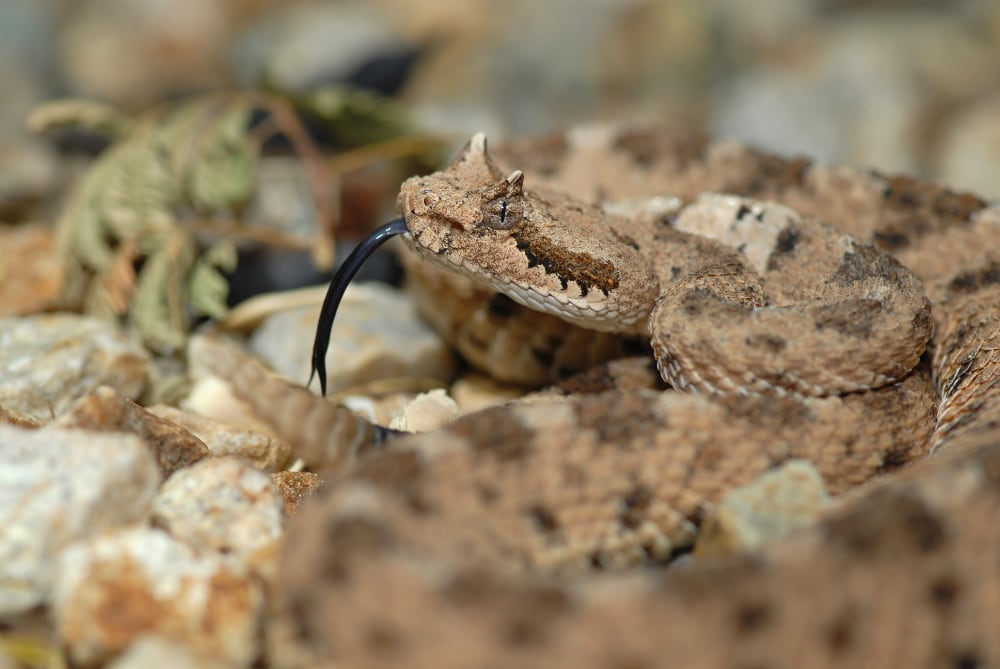Snakes had to develop highly specialized venom glands to produce and store what the researchers call a diverse and deadly mix of venoms to those who are bitten by the venomous snakes.
A study conducted at the University of Texas at Arlington has determined how snake venoms, both within snake species as well as between snake species, have evolved over the years to develop new complex traits.
“We have relatively few detailed examples of how new regulatory systems evolve to drive novel complex traits,” Todd Castoe, UTA professor of biology and co-author of the study, ” ““Snake venom gene expression is coordinated by novel regulatory architecture and the integration of multiple co-opted vertebrate pathways,” said in a press release on the UTA website. “This study provides a valuable example that illustrates a surprising number of distinct ‘strategies’ for how evolution may rewire regulatory networks, providing key expectations for how such rewiring may occur in other species, including humans.”
“This work gives us a better understanding of how snake venom evolved and how venom production functions at a genomic level,” Blair Perry, lead author of the study. “In addition to studying specific venom genes, we can now investigate parts of the genome involved in the regulation of these genes as well,” Perry said. “This opens up new opportunities to understand how variation in snake venom, both within and between snake species, corresponds to variation in the genome.” Perry earned his Ph.D at UTA and received it in 2021. Castoe was his faculty advisor.

The Gaboon viper is native to Africa and is highly venomous.
According to the news release, snakes had to develop highly specialized venom glands to produce and store what the researchers call a diverse and deadly mix of venoms to those who are bitten by the venomous snakes. These venom glands, the researchers say, may have evolved from ancestral salivary glands. However, Perry’s work shows that the evolution and repurposing of existing regulatory systems were required to control the expression of these venom genes.
Granite Spiny Lizard Diet May Factor in More Potent Southern Pacific Rattlesnake Venom
Top 10 Venomous North American Snakes
“Consider the challenges to understanding the origination and maintenance of this complex chemical weapons system,” Stephen Mackessy, professor of biology at the University of Northern Colorado and a co-author of the study. “Venoms largely consist of repurposed regulatory proteins and peptides, overexpressed and stored in a specialized gland only millimeters from the snake’s brain. These toxins must be stabilized, yet ready to go at a moment’s notice, and they may be stored for long periods of time.
“Our earlier work has demonstrated that several mechanisms exist that promote this long-term storage, but the processes leading to the regulation, evolution and diversification of these systems have largely remained unknown. This study demonstrates that in addition to the toxin genes, regulatory pathways common to vertebrate animals were also co-opted to control this system.”
Snake Venom Effects Vary
Snake venoms cause wide ranging negative effects to humans based on the species of snake as well as the amount of venom injected into a human. And some assert that venoms may be more potent depending on the diet. For example, a researcher at Loma Linda University speculated in 2012 that the venom of the Southern Pacific rattlesnake (Crotalus oreganus helleri) found in the San Jacinto Mountains of Southern California is more potent than those found in the San Gabriel and San Bernardino Mountains because of the abundance of the Granite spiny lizard (Sceloporus orcutti) in the San Jacinto mountains versus the other two mountain ranges.
The complete study, “Snake venom gene expression is coordinated by novel regulatory architecture and the integration of multiple co-opted vertebrate pathways,” can be read on the Genome Research website.



